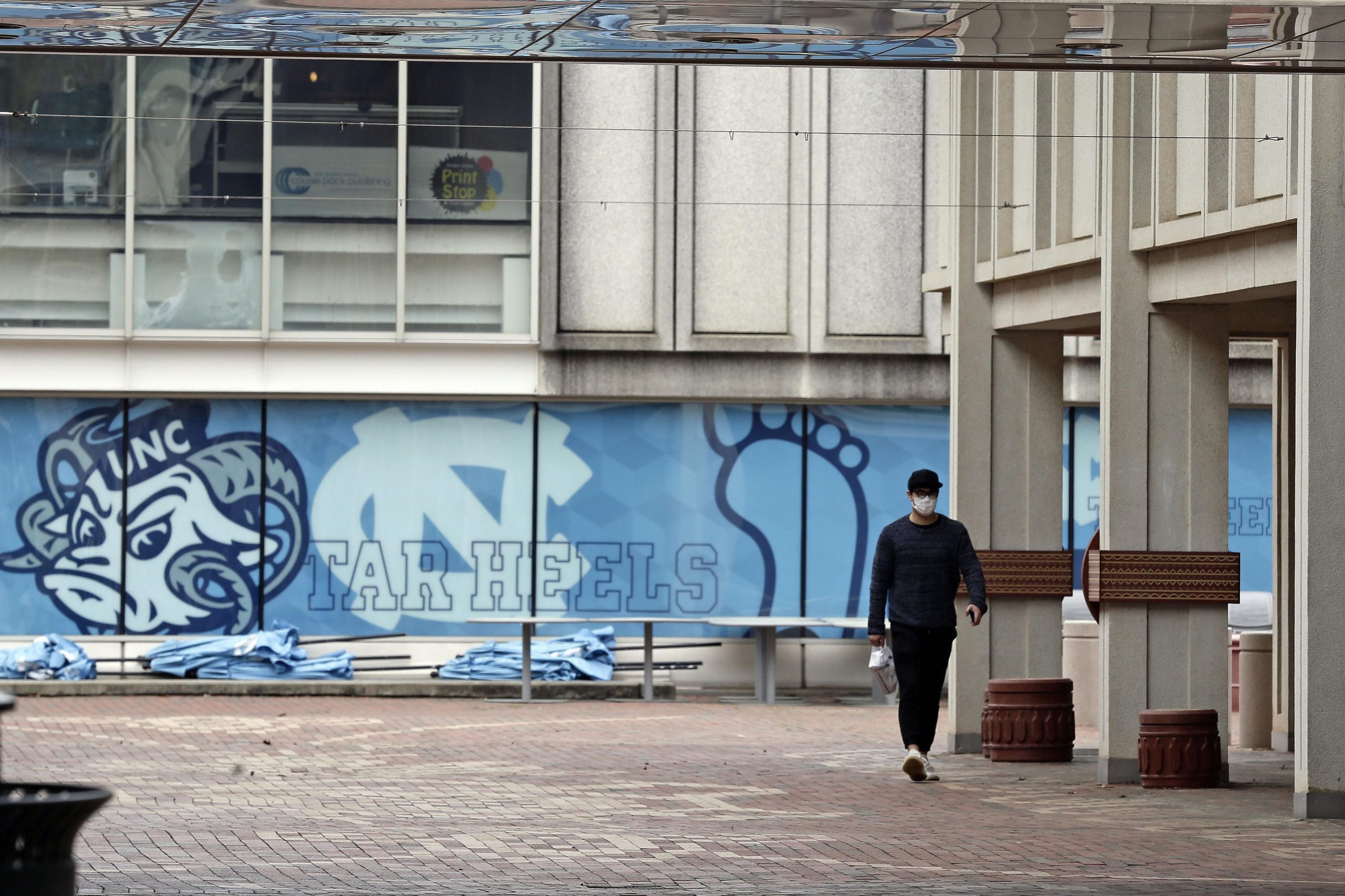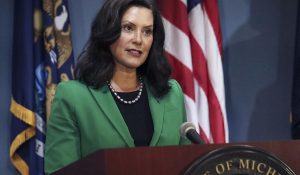The University of North Carolina at Chapel Hill is ending in-person instruction for undergrads just a week after reopening following several clusters of coronavirus cases reported among students living in dorms and a fraternity house.
Starting Wednesday, all undergraduate in-person instruction will shift to remote learning, Chancellor Kevin M. Guskiewicz and Provost Robert A. Blouin wrote in a joint message. The semester started Aug. 10, and students moved in about one week earlier. The university leadership said it made its decision in “consultation with state and local health officials, Carolina’s infectious disease experts, and the UNC System.”
“As much as we believe we have worked diligently to help create a healthy and safe campus living and learning environment, we believe the current data presents an untenable situation,” they wrote.
The North Carolina Department of Health and Human Services defined a “cluster” as “five or more cases that are deemed close proximity.”
There were “cluster” alerts for Hinton James residence hall, Ehringhaus Community and Granville Towers, and Sigma Nu fraternity. The university says 177 students are in isolation and 349 are in quarantine on and off campus.
The university is not alone in seeing an uptick in infections within days of students returning to campus.
Bethel College in North Newton, Kansas, reported a cluster of 46 confirmed cases of Covid-19. Officials said 482 people have been tested, but some results are still pending. At Oklahoma State University, a sorority house is under quarantine after reporting 23 cases. And the University of Notre Dame is seeing a spike in coronavirus cases, with more than a quarter of its 58 confirmed cases rolling in over the weekend.
Going into the fall semester, colleges across the country looking to open for at least part-time in-person instruction were cautiously optimistic about a safe semester. Campus leadership touted reopening plans that included entry tests, lowering the density of their campuses by inviting back a limited number of students, setting social distancing and mask-wearing guidelines and saying their students would honor safe conduct pledges.
But even with fewer students on campus, the Centers for Disease Control and Prevention has compared shared living in college, including dorms, to nursing or assisted living homes. Both living situations are ripe for person-to-person transmission of the virus and could lead to similar patterns of spread.
Local leaders in college towns had also been wary of the return of students to campus, saying that while students could behave on campus, getting them to abide by strict social distancing guidelines off campus could be the bigger problem.
Before school resumed at UNC, Orange County’s Health Director Quintana Stewart warned that if students moved back, Chapel Hill “could quickly become a hot spot for new cases.”
Stewart had recommended to Guskiewicz that classes should be fully online for the first five weeks of the semester. Even earlier on in the summer, UNC students had not been cooperative with the communicable disease investigation and control measures, Stewart said late last month.
Following Stewart’s warning, Guskiewicz had told the campus community that he had updated the local health officials on the campus’ progress toward making a “safe learning and working environment.”
“I also reiterated that we believe we are well prepared for the start of the Fall semester and we will continue to track trends that could lead us to recommend a modification to our plans,” he wrote. “Soon after, I discussed this matter with the UNC System and we were advised by the UNC System to stay the course with our current plan.”
Barbara K. Rimer, dean of UNC Gillings School of Global Public Health, wrote Monday that the chancellor and provost did not have the “full freedom” to decide whether or not to reopen their campus because “the [Board of Governors] told system universities they had to reopen and that individual university chancellors could not make those decisions independently.”
With the growing number of infections among students and reports of off-campus behavior showing “drinking, no masks or distancing and crowds,” Rimer said the university should return to remote instruction.
“After only one week of campus operations, with growing numbers of clusters and insufficient control over the off-campus behavior of students (and others), it is time for an off-ramp,” Rimer said. “We have tried to make this work, but it is not working.”



















